Research on the Impact Loading and Energy Dissipation of Concrete after Elevated Temperature under Different Heating Gradients and Cooling Methods
Abstract
:1. Introduction
2. Materials and Methods
2.1. Specimens Preparation and the Heating and Cooling Test
2.2. Sieving Test on the Specimens after Impact Compression Test
3. Results and Discussion
3.1. Test Phenomenon Analysis
3.2. Crushing Degree Analysis
3.3. Fragmentation Distribution Analysis
3.4. Fragmentation Energy Dissipation Analysis
3.4.1. Uniaxial Test and Energy Dissipation Characteristics Analysis
3.4.2. Energy Dissipation Analysis of Different Temperature Gradients
3.4.3. Energy Dissipation Analysis of Different Cooling Methods
3.5. Fragmentation Energy Dissipation Density Characteristics and Peak Stress Analysis
3.6. Fragmentation Energy Dissipation Density Characteristics and Fractal Dimension Analysis
4. Conclusions
Author Contributions
Funding
Conflicts of Interest
References
- Mandeibrot, B.B. The Fractal Geometry of Nature; W.H. Freeman and Company: New York, NY, USA, 1982; pp. 1–17. [Google Scholar]
- Griffith, A.A. The phenomenon of rupture and flow in solids. Philos. Trans. R. Soc. 1921, A221, 163–198. [Google Scholar] [CrossRef]
- Weibull, W. A Statistical Theory for the Strength of Materials; American Mathematical Society: Stockholm, Sweden, 1939. [Google Scholar]
- Turcotte, D.L. Fractal and fragmentation. J. Geophys. Res. 1986, 91, 1921–1926. [Google Scholar] [CrossRef]
- Cao, M.S.; Ren, Q.W. Fractal behavior of concrete crack and its application to damage assessment. Key Eng. Mater. 2006, 312, 325–332. [Google Scholar] [CrossRef]
- Li, Y.Y.; Zhang, S.C.; Zhang, X. Classification and fractal characteristics of coal rock fragments under uniaxial cyclic loading conditions. Arabian J. Geosci. 2018, 11, 201. [Google Scholar] [CrossRef]
- Zhang, Z.X.; Kou, S.Q.; Jiang, L.G.; Lindqvist, P.A. Effects of loading rate on rock fracture: Fracture characteristics and energy partitioning. Int. J. Rock Mech. Min. Sci. 2000, 37, 745–762. [Google Scholar] [CrossRef]
- Qi, P.; Luo, X.; Ma, Q.Y.; Yuan, P. Broken energy dissipation characteristics of sandstone specimens under impact loads. Chin. J. Rock Mech. Eng. 2015, s2, 4197–4203. [Google Scholar]
- Deng, Y.; Chen, M.; Jin, Y.; Zou, D.W. Investing action of the dynamic characteristics and energy consumption for breaking rocks using the impact load. Pet. Drill. Tech. 2016, 44, 27–32. [Google Scholar]
- Xu, J.Y.; Lu, X.C.; Zhang, J.; Wang, Z.D.; Bai, E.L. Research on energy properties of rock cyclical impact damage under confining pressure. Chin. J. Rock Mech. Eng. 2010, 29, 4159–4165. [Google Scholar]
- Xie, H.P.; Ju, Y.L.; Li, Y. Criteria for strength and structural failure of rocks based on energy dissipation and energy release principles. Chin. J. Rock Mech. Eng. 2005, 24, 3003–3010. [Google Scholar]
- Carpinteri, A.; Pugno, N. Fractal fragmentation theory for size effects of quasi-brittle materials in compression. Mag. Concr. Res. 2005, 57, 309–313. [Google Scholar] [CrossRef]
- Hu, L.Q.; Li, X.B.; Zhao, F.J. Study on energy consumption in fracture and damage of rocks induced by impact loadings. Chin. J. Rock Mech. Eng. 2002, 21, 2304–2308. [Google Scholar]
- Code for Design of Sprinkler Systems; GB 51251-2017; Ministry of Housing and Urban-Rural Development of the People’s Republic of China: Beijing, China, 2017.
- Coarse Aggregate and Aggregated Mixture Sieving Test Standard; T0302-2005; Ministry of Transport of the People’s Republic of China: Beijing, China, 2005.
- Nagahama, H. Fractal scaling of rock fragmentation. Earth Sci. Front. 2000, 7, 167–177. [Google Scholar]
- Liu, S.; Xu, J.Y.; Bai, E.L.; Gao, Z.G. Research on impact fracture of rock based on fractal theory. J. Vib. Shock. 2013, 32, 164–166. [Google Scholar]
- Grady, D.E.; Kipp, M.E. Geometric statistics and dynamic fragmentation. J. Appl. Phys. 1985, 58, 1210–1222. [Google Scholar] [CrossRef]
- Guadin, A.M.; Schuhmann, J.R.; Dasher, J. Development of extraction process for uranium from South African gold uranium ores. Min. Eng. 1956, 8, 802–806. [Google Scholar]
- Rosin, P.; Rammler, E. Laws governing the fineness of powder coal. J. Inst. Fuel. 1933, 7, 29–36. [Google Scholar]
- Alomso, C.; Fernandez, L. Dehydration and rehydration processes of cement paste exposed to high temperature environments. J. Mater. Sci. 2004, 39, 3015–3024. [Google Scholar] [CrossRef]
- Gao, W.X.; Liu, Y.T. Energy dissipation of rock damage under impact loading. Chin. J. Rock Mech. Eng. 2003, 22, 1777–1780. [Google Scholar]
- LI, X.B.; Gu, D.S. Rock Impact Dynamics; Central South University of Technology Press: Changsha, China, 1994; pp. 2–93. [Google Scholar]
- Kolsky, H. Stress waves in solids. J. Sound Vib. 1964, 1, 88–110. [Google Scholar] [CrossRef]
- Kolsky, H. An investigation of the mechanical properties of materials at very high rates of loading. Proc. Phys. Soc. 1949, 62, 676–700. [Google Scholar] [CrossRef]
- Lundberg, B. A split Hopkinson bar study of energy absorption in dynamic rock fragmentation. Int. J. Rock Mech. Min. Sci. Geomech. Abstr. 1976, 13, 187–197. [Google Scholar] [CrossRef]
- Fic, S.; Szeląg, M. Analysis of the development of cluster cracks caused by elevated temperatures in cement paste. Constr. Build. Mater. 2015, 83, 223–229. [Google Scholar] [CrossRef]
- Zhai, Y.; Ai, X.Q.; Deng, Z.; He, W. Influences of cooling mode and high temperature on concrete compressive strength. J. Hunan Univ. 2014, 41, 74–80. [Google Scholar]
- Xu, J.Y.; Liu, J.; Li, Z.W.; Bai, E.L.; Ren, W.B. Impact mechanical properties of concrete at and after exposure to high temperature. J. Build. Mater. 2013, 16, 45–49. [Google Scholar]
- Luo, X.; Sun, W.; Chan, S.Y.N. Effect of heating and cooling regimes on residual strength and microstructure of normal strength and high-performance concrete. Cem. Concr. Res. 2000, 30, 379–383. [Google Scholar] [CrossRef]

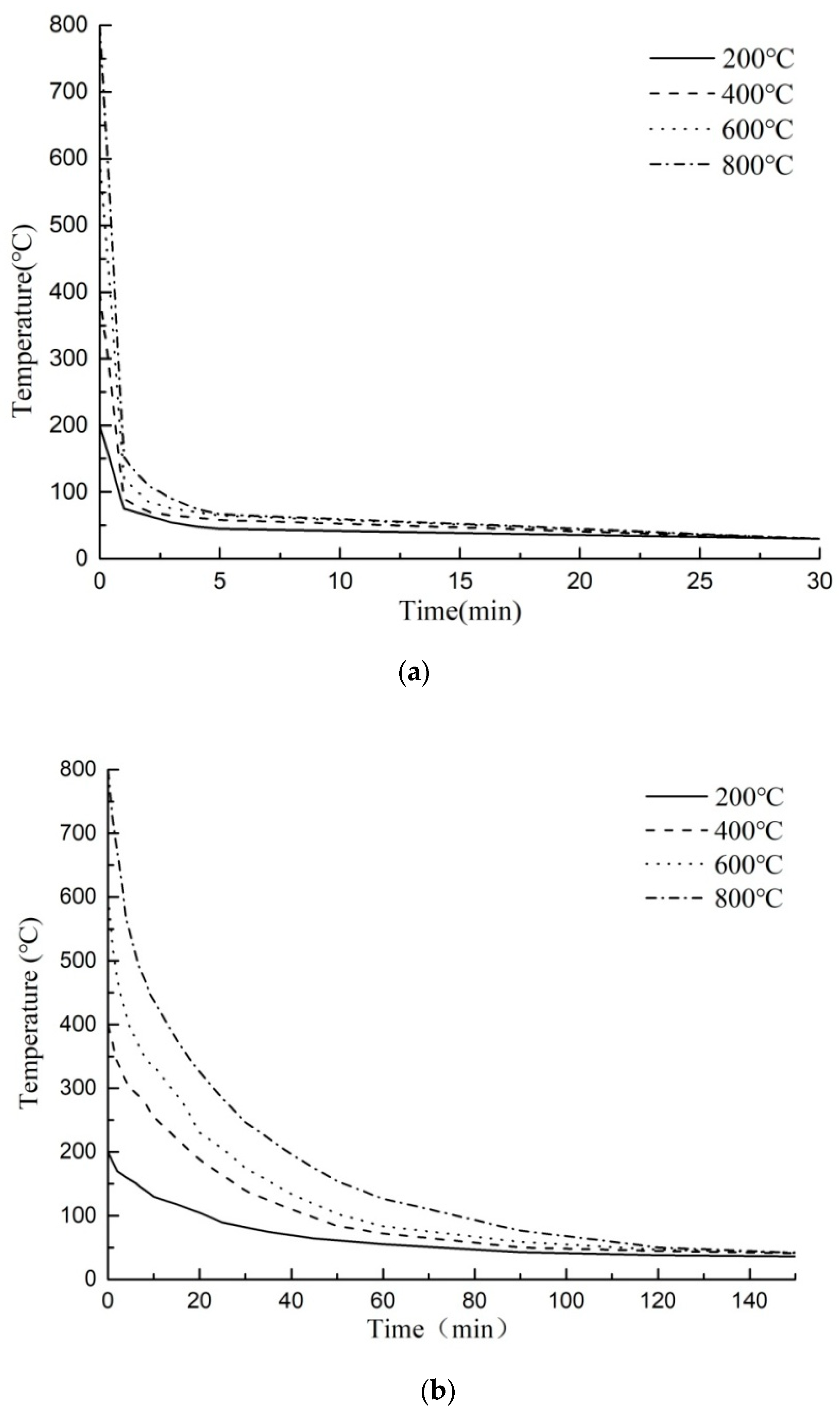


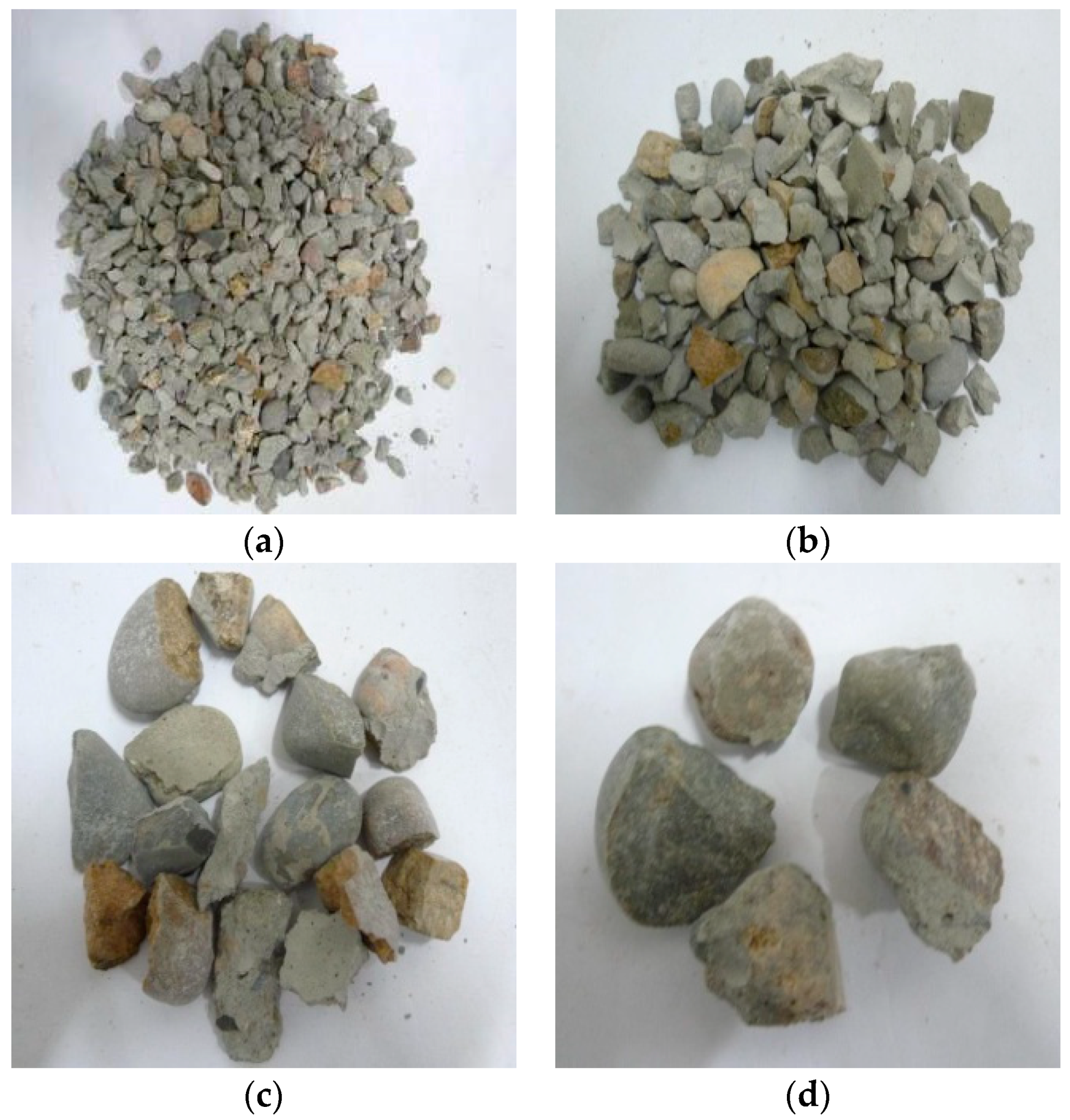
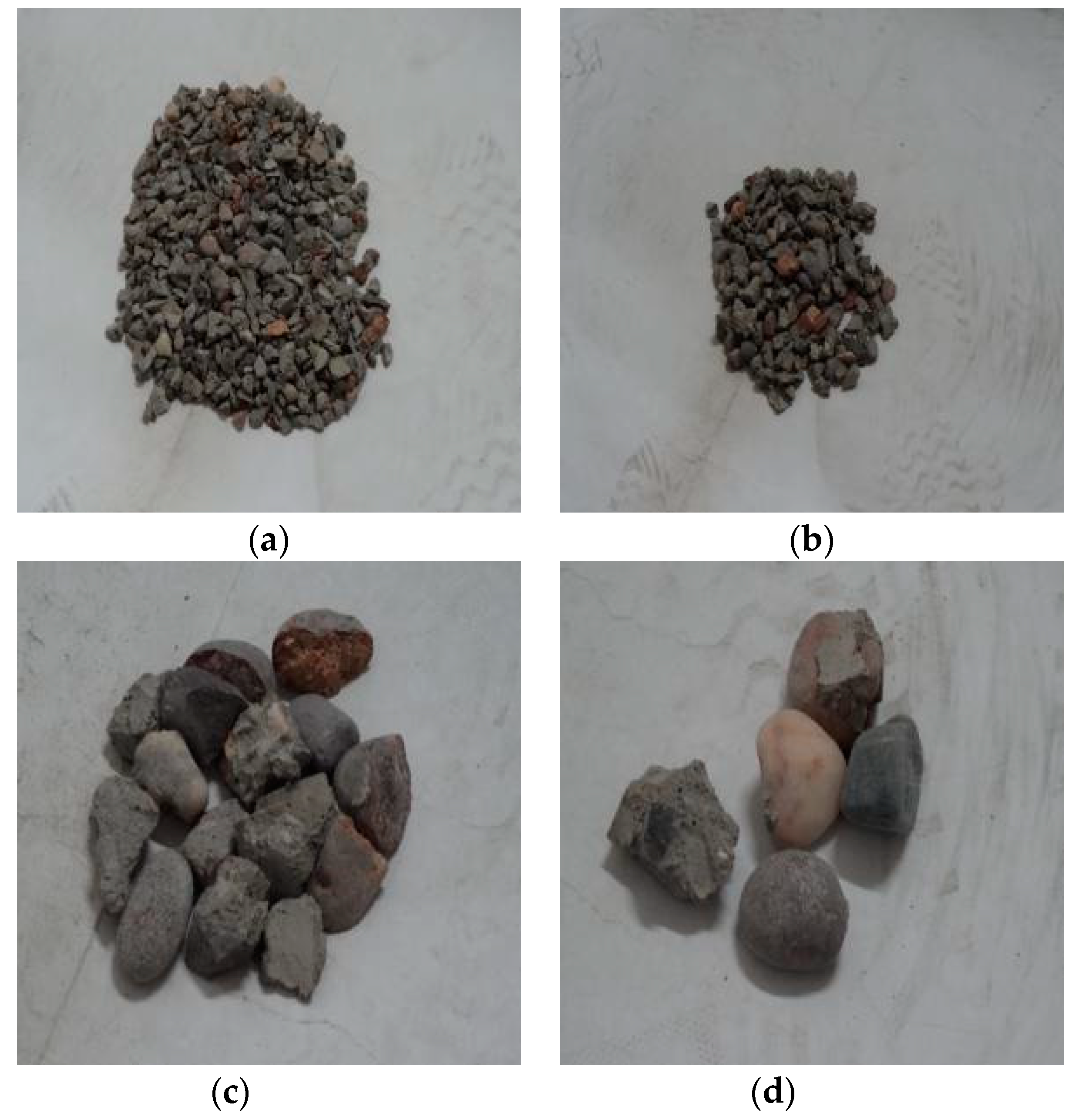

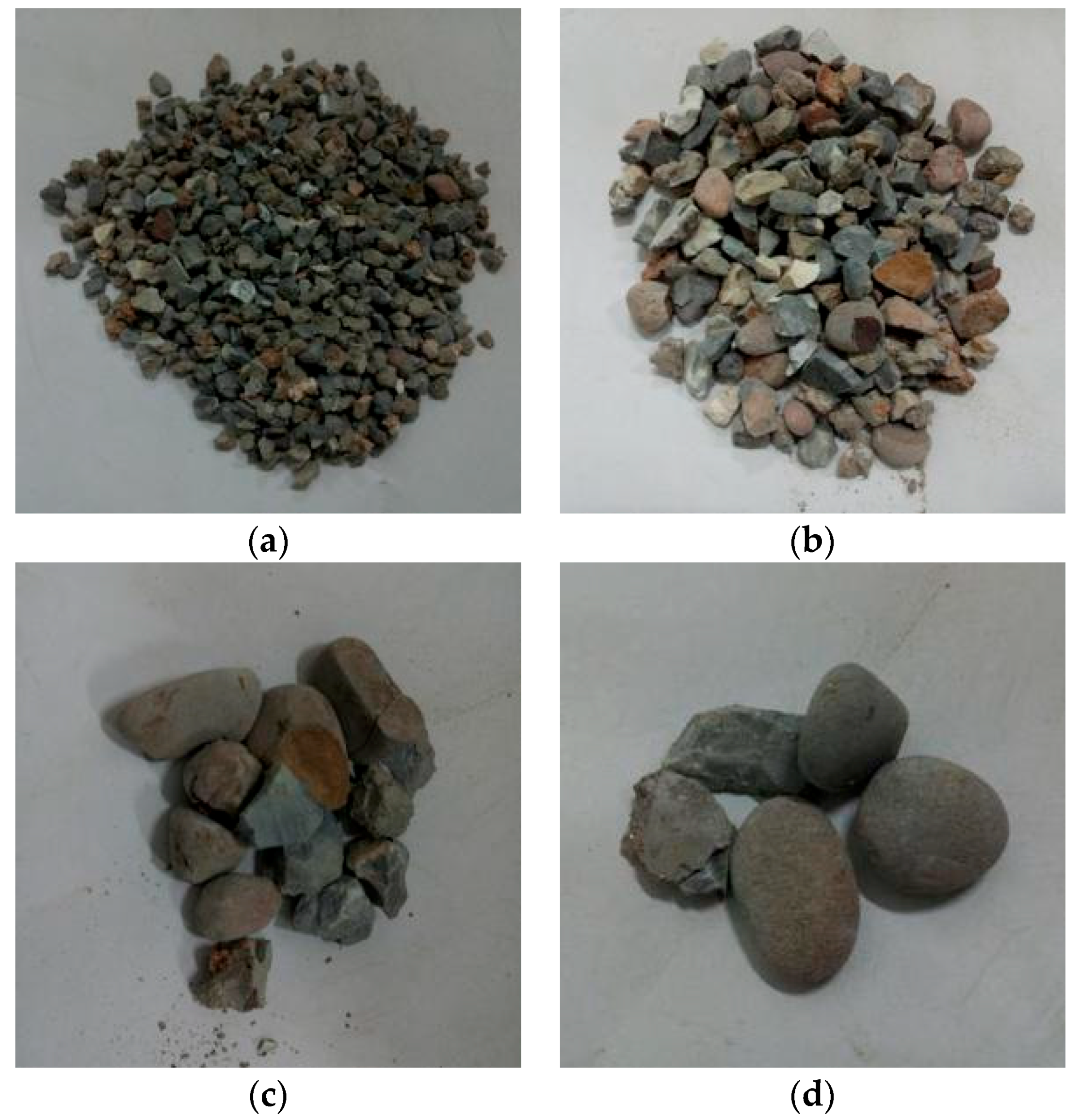
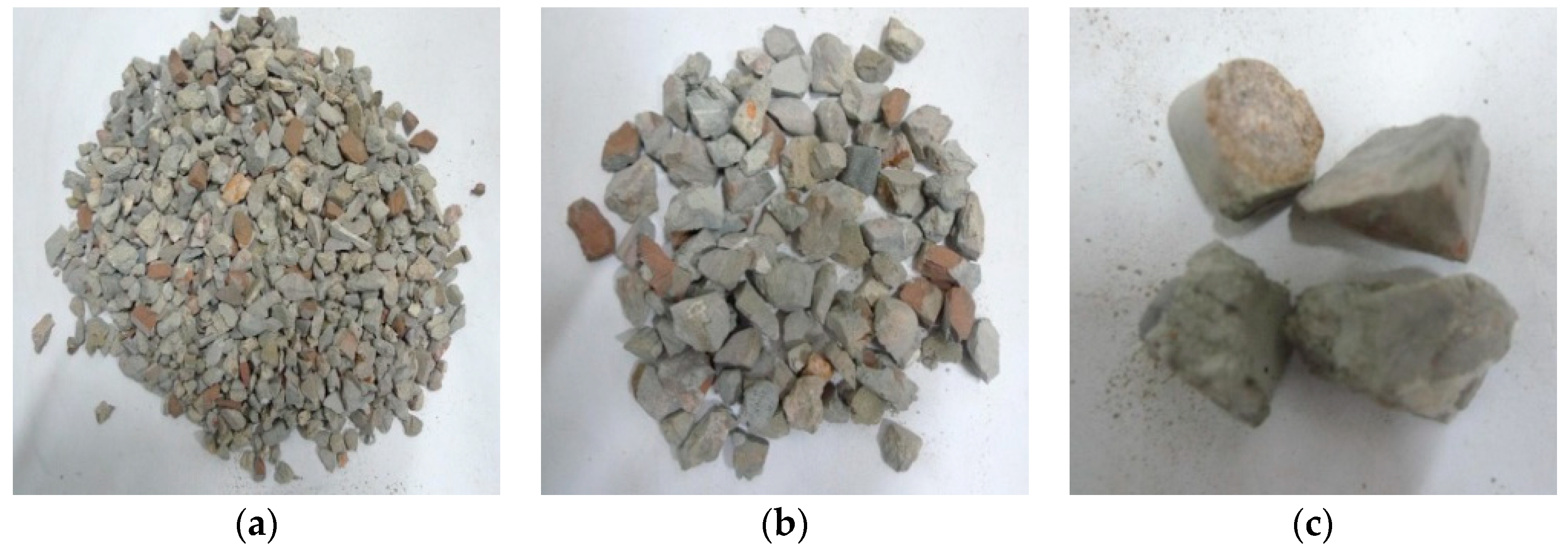
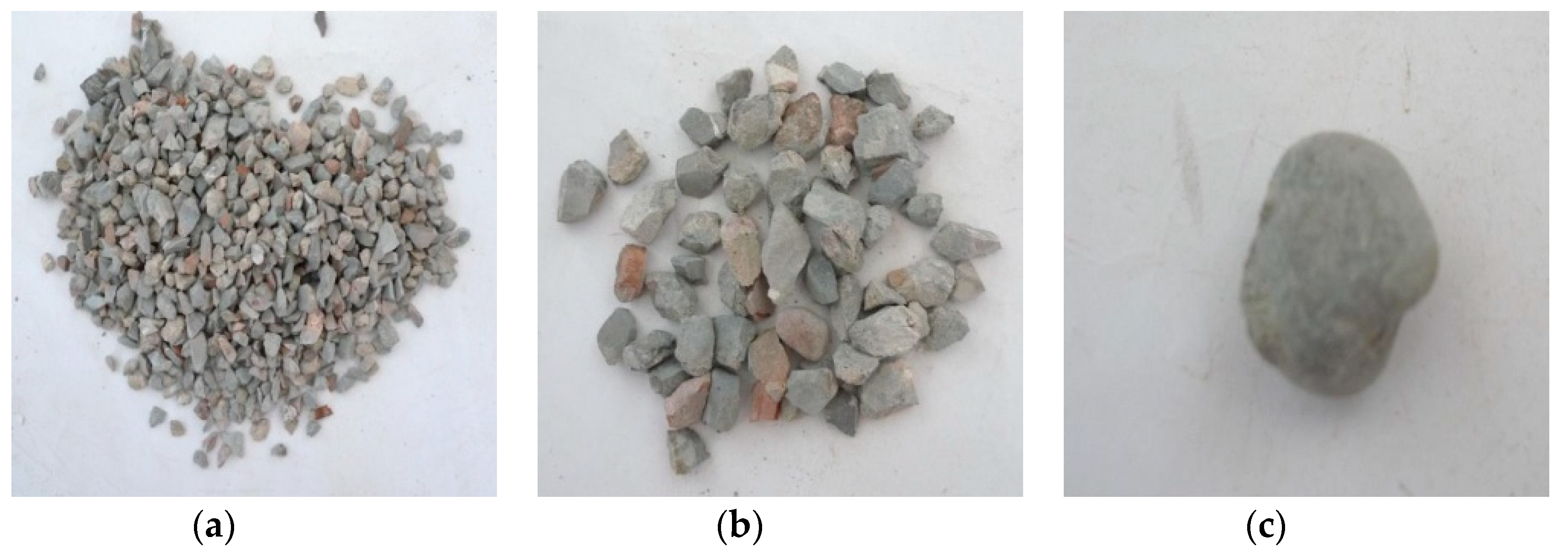
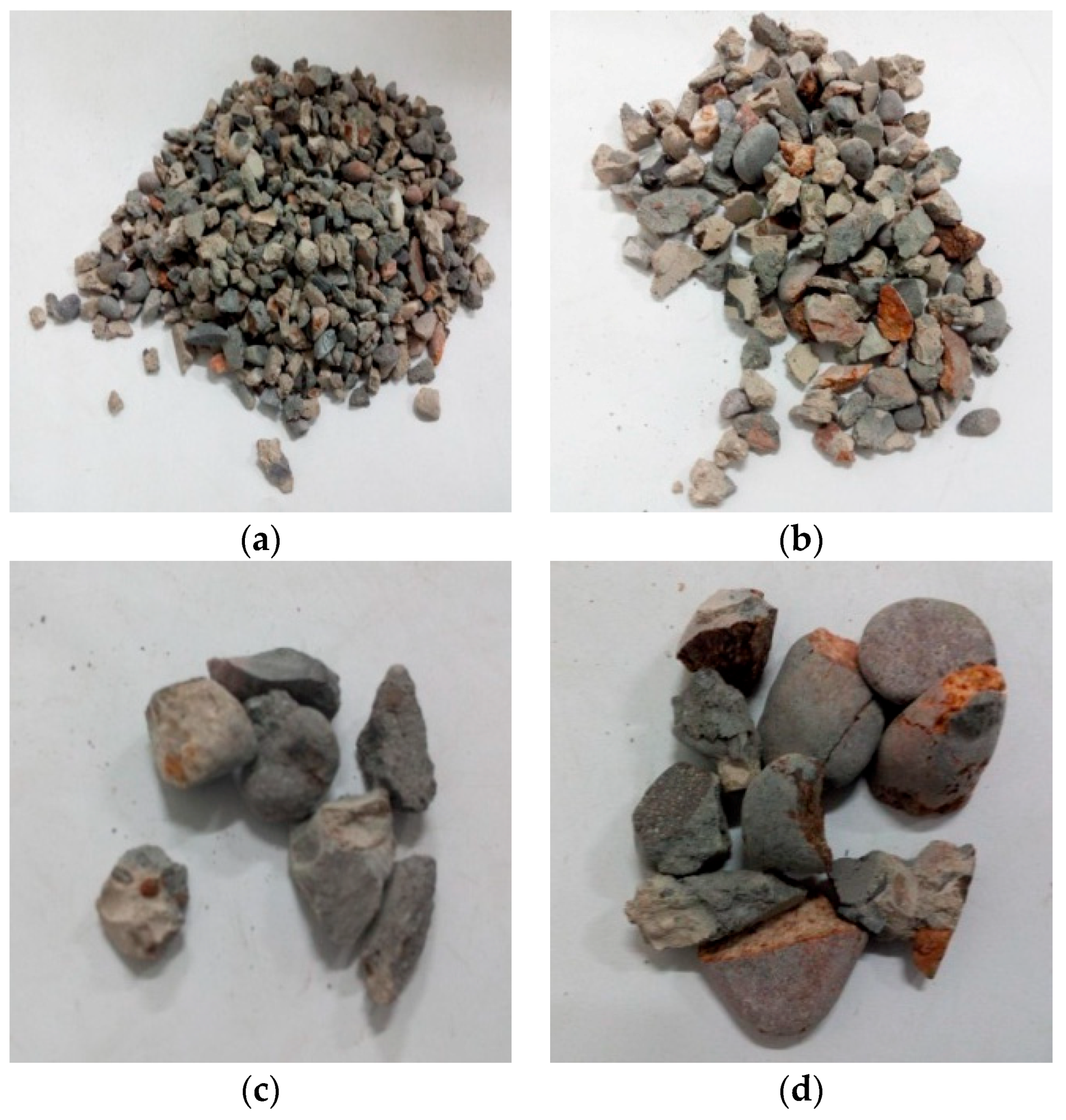
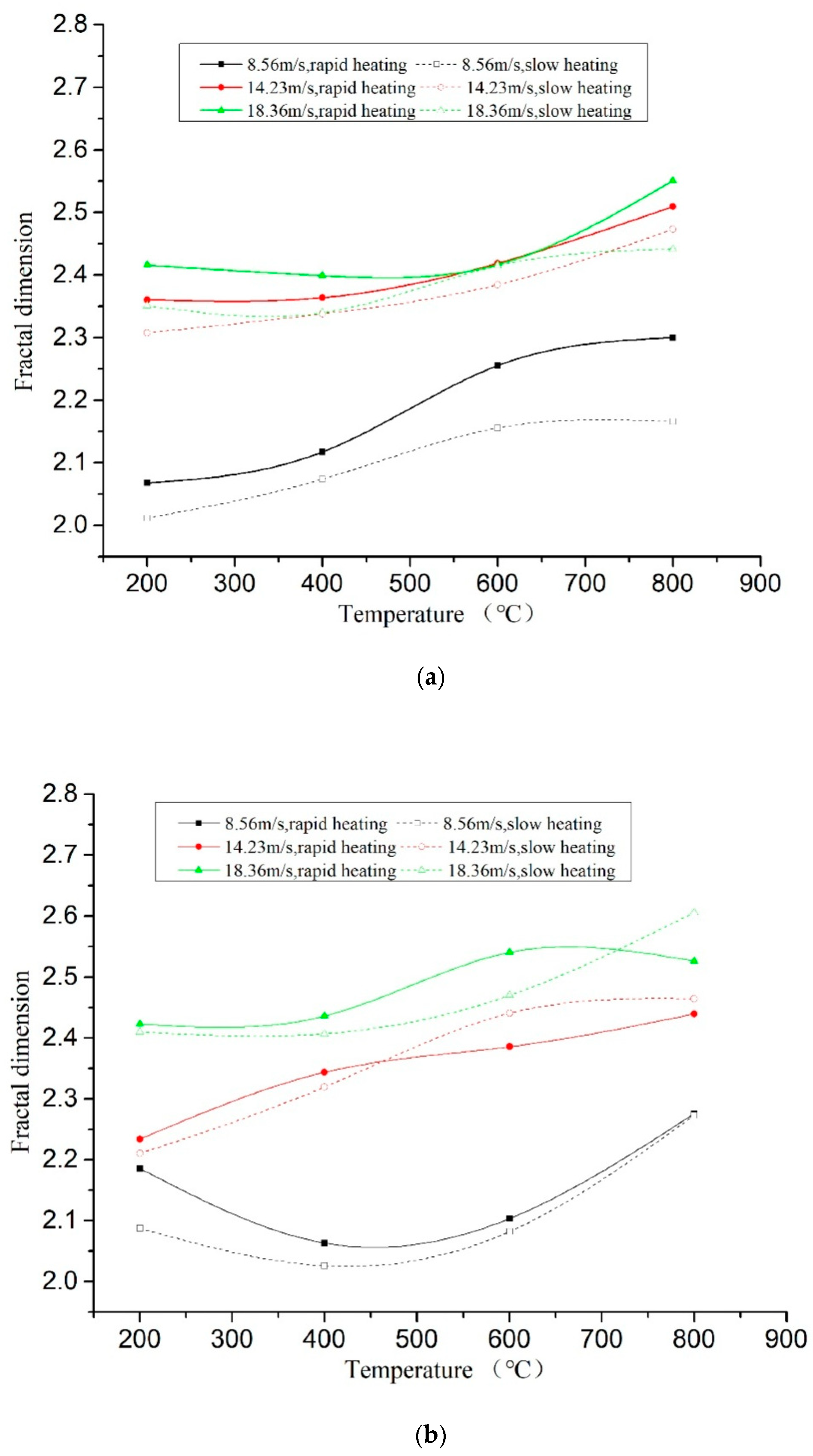
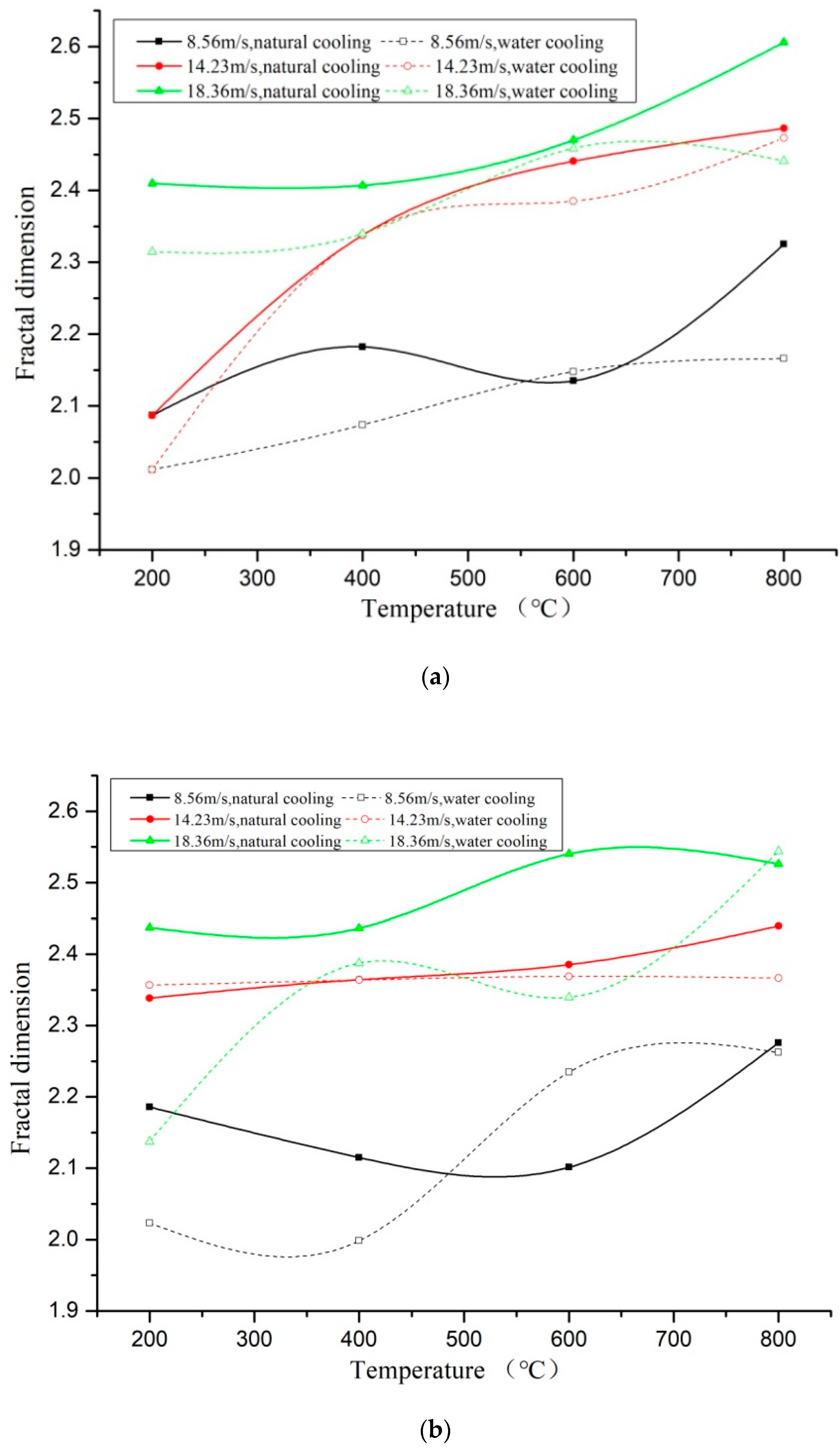
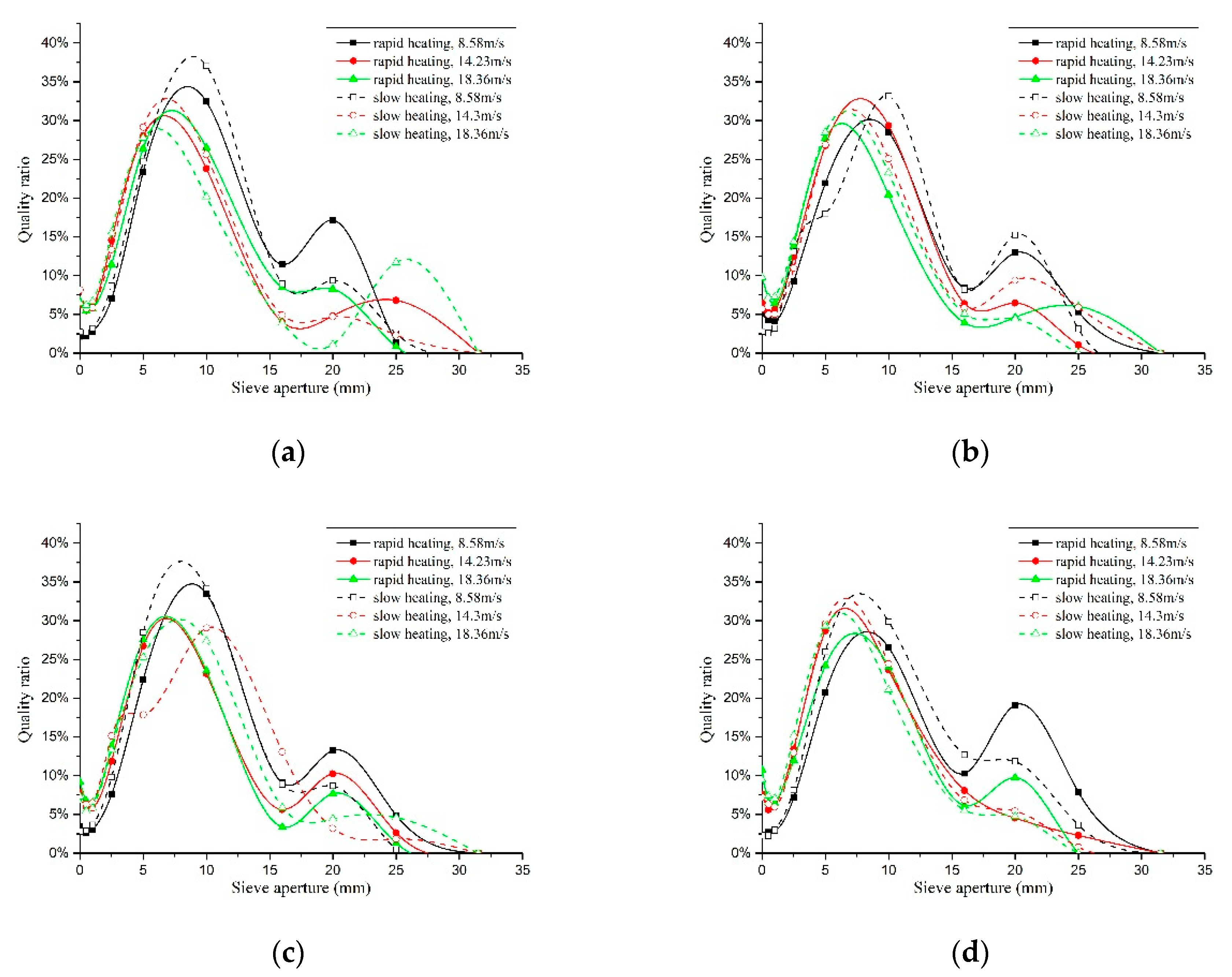
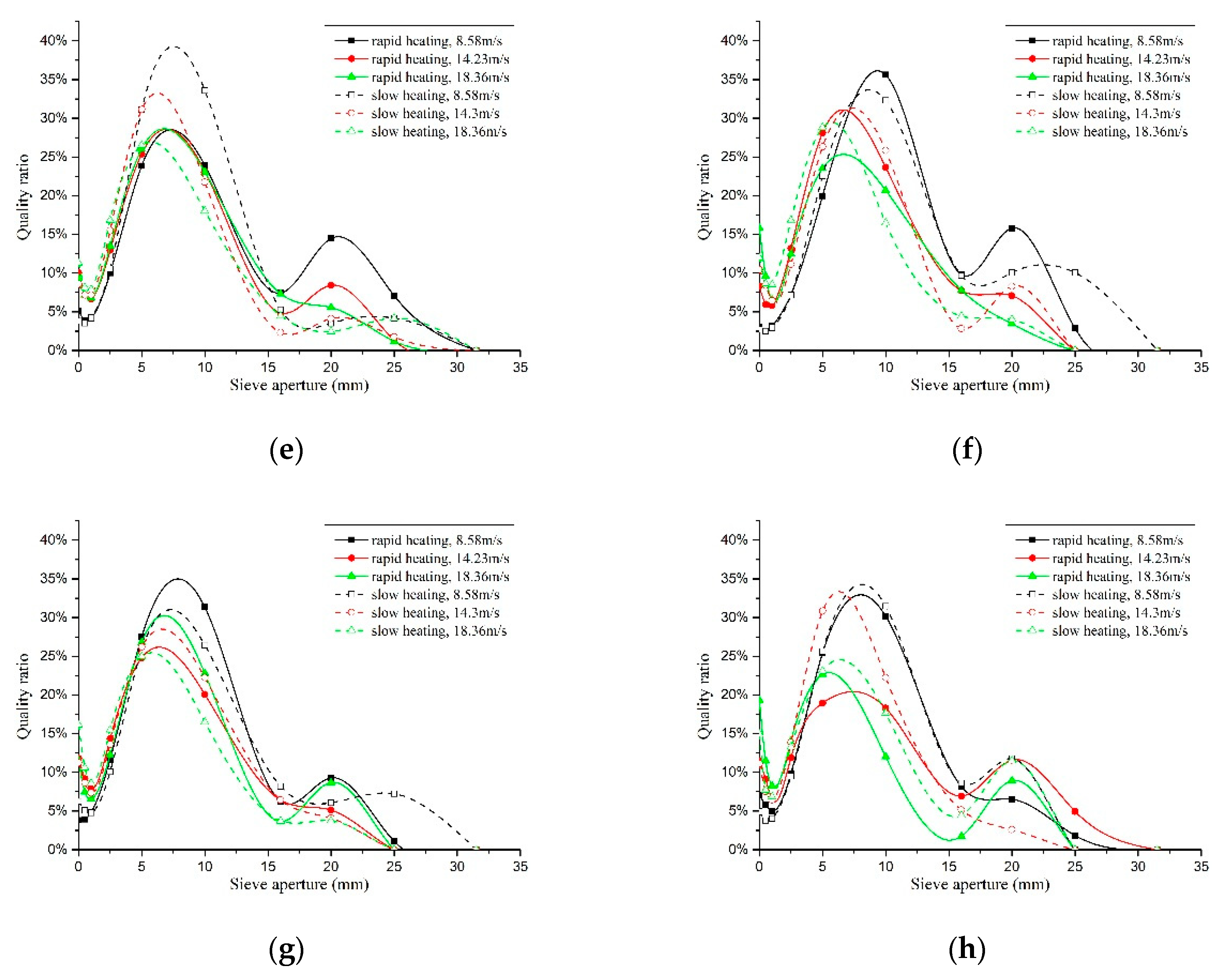
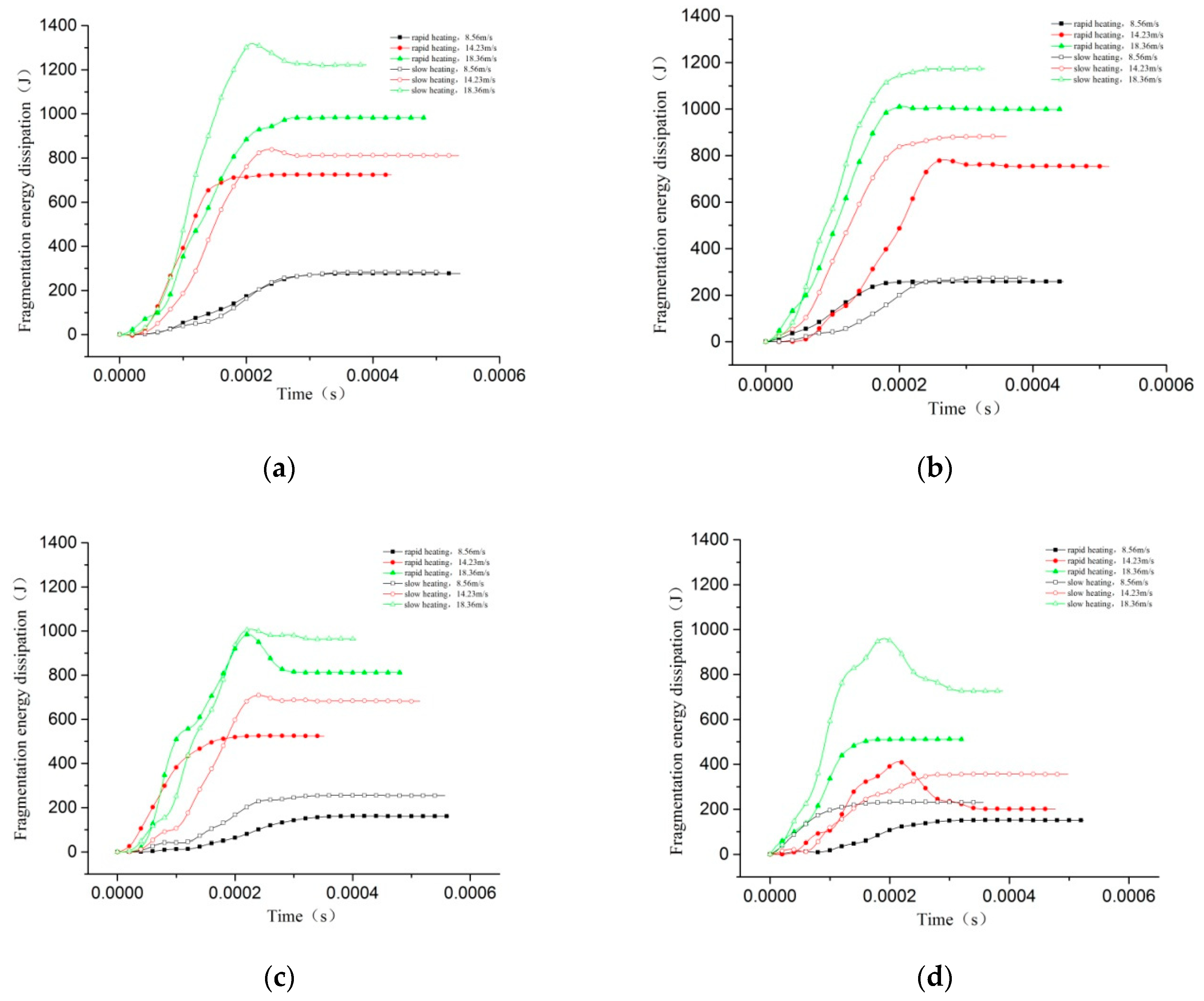

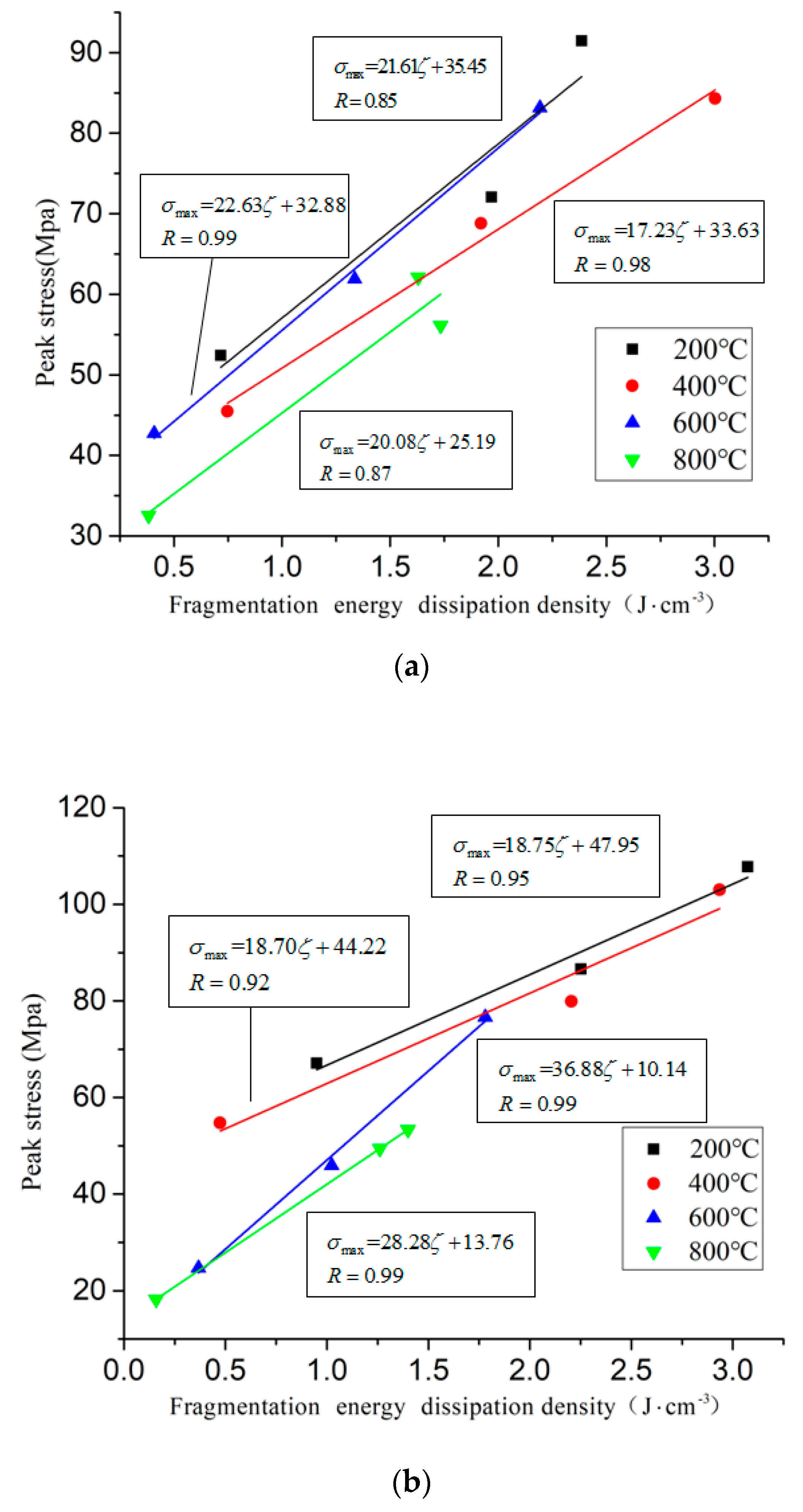
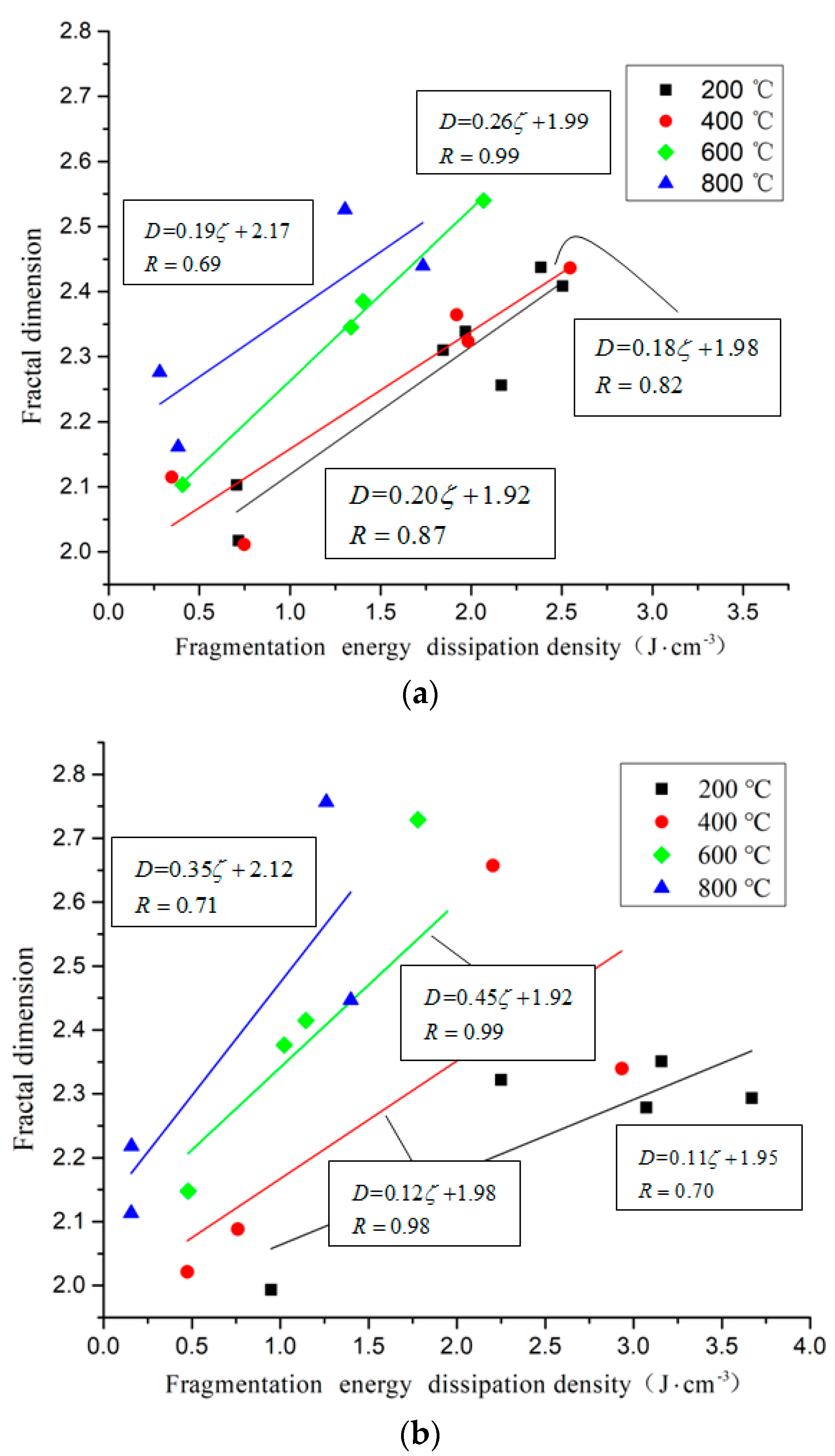
| Item | Water | Cement | Pebble | Sand | Fly Ash | Mineral Powder | Additive |
|---|---|---|---|---|---|---|---|
| Ingredients (kg·m−3) | 155 | 250 | 1165 | 670 | 90 | 60 | 10 |
| Proportion | 0.62 | 1.00 | 4.66 | 2.68 | 0.36 | 0.24 | 0.04 |
| Loading Rate (m/s) | Fractal Dimension | |||
|---|---|---|---|---|
| 200 °C | 400 °C | 600 °C | 800 °C | |
| 8.56 | 2.0872 | 2.0261 | 2.0822 | 2.3250 |
| 14.23 | 2.2766 | 2.3376 | 2.4406 | 2.4861 |
| 18.36 | 2.4096 | 2.4068 | 2.4699 | 2.6058 |
© 2018 by the authors. Licensee MDPI, Basel, Switzerland. This article is an open access article distributed under the terms and conditions of the Creative Commons Attribution (CC BY) license (http://creativecommons.org/licenses/by/4.0/).
Share and Cite
Zhai, Y.; Li, Y.; Li, Y.; Jiang, W.; Liu, X. Research on the Impact Loading and Energy Dissipation of Concrete after Elevated Temperature under Different Heating Gradients and Cooling Methods. Materials 2018, 11, 1651. https://doi.org/10.3390/ma11091651
Zhai Y, Li Y, Li Y, Jiang W, Liu X. Research on the Impact Loading and Energy Dissipation of Concrete after Elevated Temperature under Different Heating Gradients and Cooling Methods. Materials. 2018; 11(9):1651. https://doi.org/10.3390/ma11091651
Chicago/Turabian StyleZhai, Yue, Yubai Li, Yan Li, Wenqi Jiang, and Xuyang Liu. 2018. "Research on the Impact Loading and Energy Dissipation of Concrete after Elevated Temperature under Different Heating Gradients and Cooling Methods" Materials 11, no. 9: 1651. https://doi.org/10.3390/ma11091651




